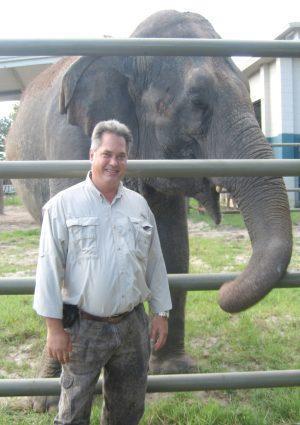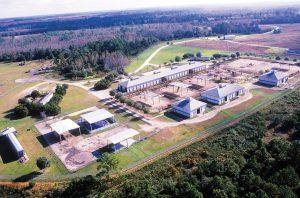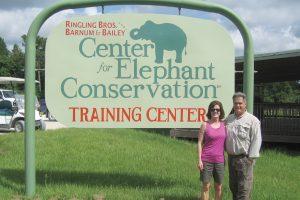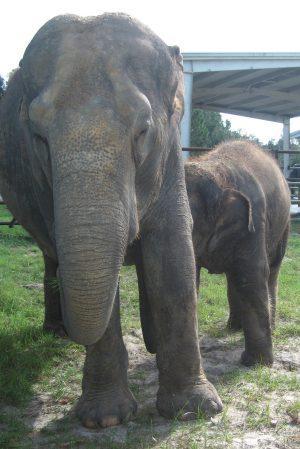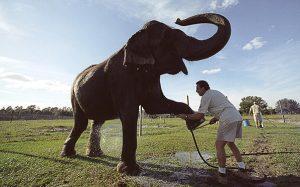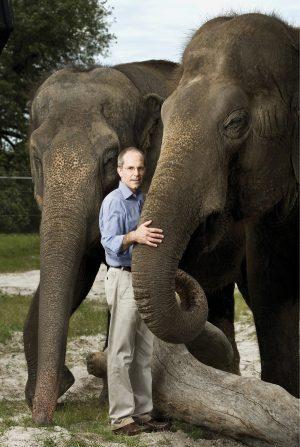By Dale Joyce
Florida houses the largest elephant conservation center in the western hemisphere, thanks to the Feld Family, owners of Ringling Bros. and Barnum & Bailey® Circus. The facility is located half way between Tampa and Orlando making it easily accessible for research scientists from around the world and mirroring the climate from the Asian elephants’ homeland in India. The center is a multi-million dollar state of the art facility that accepts no government or outside funding. It is solely funded by a percentage of every Ringling ticket sold, which give us more of a reason to attend The Greatest Show On Earth®.
When visiting Ringling Bros. and Barnum & Bailey Center for Elephant Conservation® (CEC), we discovered the attention to detail and are thankful that the Feld Family has taken it upon themselves to help save this incredible endangered species. We heard a comment that the CEC houses “the most pampered pachyderms in the world” and we believe it after just a short three hour visit. At every turn, on the over 200 acre facility, we were in awe.
Our journey began with a short drive between perfectly placed palms. As we rounded a curve we were greeted by elephants in a pasture. Later we learned that they are retired circus elephants. Once we entered the main building, we saw a short presentation and were able to ask questions before taking our journey to see the entire CEC up close.
The questions I choose to ask came from weeks of prior research and conversation with John Dailey, animal overseer for the Tallahassee Museum. We both wondered that since these elephants do not live in the wild, how is their life? Are they enjoying themselves? How are their minds being stimulated? How is breeding accomplished? And how do they thrive?
As we jumped on a golf cart and began our tour, we noticed that every acre was perfectly planned and beautiful. Many acres were used to grow plants, like elephant grass, to supplement their diets. The pastures and paddocks were large and all the barns looked brand new. The elephants noticed our every movement and came to the fences when we approached.
Our first stop was to see April and her mother, Alana. April is a 4 year old female Asian elephant and was the youngest at the CEC until August 13, 2012, when Piper was born. It takes almost two years for a female to give birth. Piper is the 24th successful birth since the CEC’s opening in 1996 and they are expecting their 25th birth early in 2013. The Ringling Bros. and Barnum & Bailey Center for Elephant Conservation leads the world in captive bred births.
We were able to interact with April and Alana, feeding them apples and carrots, and touching them. We saw the veins on the back of their large ears, where blood is drawn frequently to check their health. We were touching the top of Alana’s trunk, just below her eyes, as she cooed in an extremely low pitch. It reminded us of a cat purring and her entire trunk vibrated. It‘s the way elephants communicate to others miles away and was awesome to not only hear, but to experience the power.
Carrots and apples are just two of the many treats the elephants are given on a daily basis. When we visited the Hay Barn and the food pavilion, we saw 100’s of bales of high vitamin hay, imported from California, locally grown fresh alfalfa, Purina sweet feed, and boxes of fresh vegetables, all a part of the weekly diet. The largest Male at the CEC, named Vance, weighs almost 16,000 pounds and eats two bales of imported hay each day along with other foods. We discovered there are a total of 29 elephants currently on the property and another 19 on tour with Ringling Bros. and Barnum & Bailey.
The CEC is very important in the scientific community. In India the Asian elephant population has dropped from well over 200,000 to under 35,000. There are veterinarians and scientists at the CEC 24 hours a day. Some of the greatest discoveries have been made here at the CEC, for example, freezing viable pachyderm sperm for implantment; as the males are on-site and most females are on tour. This may sound simple however Artificial Insemination had never been done successfully until about 3 years ago. It is important that these type facilities thrive to ensure the Asian elephant doesn’t become extinct as their natural habitat disappears. There are less than 300 Asian elephants in North America and since 1975, no more can be brought from Asia due to the CITES Act (Convention on International Trade in Endangered Species) signed in 1973. It is important for the CEC to continue it research and care for these amazing creatures and that the facility provides a safe, comfortable and caring environment.
We had the opportunity to watch many of the elephants during our visit and learned about their circus training. As with humans, not every elephant is a born performer. They are each monitored and when the time is right, are picked to go on tour, based off the elephant’s natural ability and proclivity to perform. Those elephants that don’t gravitate towards the training techniques are gracefully left to remain on the facility grounds, or sometimes can be partnered up to serve as a companion with various Zoo’s around the country for which may only have one or a few elephants. The performances you see a Ringling Bros. Circus are extensions of their natural behavior. In fact, there is a male, Gunther, currently at the center that loves to stand on four balls. Gunther has figured out that he can actually stand on these balls. He stands with one foot on each of the balls and uses his trunk to move balls forward to walk around the paddock. It was amazing to learn that he has never been taught to do this. It is simply a natural behavior that you might see at a future Ringling Bros. and Barnum & Bailey Circus. If you have been at the circus and have witnessed elephants walking over people on the ground…this also a natural behavior, as elephants step over logs. It is truly amazing to witness the personalities of each individual elephant living in this luxury environment.
There are eighteen permanent staff members plus additional interns at the CEC, most of which live on the property. The elephants are observed 24 hours a day. The females and males are separated at most times. The females are handled by the staff in what is called ‘full contact’, meaning that they are touched, hand fed, washed and groomed daily, etc. The male elephants are in protected contact, meaning that they are rarely touched because there behavior is less predictable. The males are still cared for with all the luxuries of a five star resort with pedicures, spa baths, imported gourmet foods and enrichment items in their play areas.
The center works hand in hand with many local, state and federal government agencies. Not only monitoring the elephant health and diet, but their waste. You can believe that with a minimum of 29 elephants on property, this is an important job. I will not get into all the details in this story, but it is handled with care and is always high above the standards the government requires. At the recent Republican National Convention held in Tampa, many visitors toured the facility and were impressed that the caring of one family could do so much to preserve the Asian elephant breed for generations to come.
When you purchase your next ticket to the Ringling Bros. and Barnum & Bailey Circus, I hope you remember that you are also helping to ensure a future for these great animals. Florida should be proud to have the Ringling Bros. and Barnum & Bailey Center for Elephant Conservation in our state. The Asian elephant under protective care lives 60 to 70 years; as such, the Feld Family and their wonderful staff treat each elephant like family, because they are each an important member of their family.
Ringling Bros. and Barnum & Bailey will be back in Tallahassee to present its brand new show “Fully Charged! Gold Edition”. Don’t miss the world famous Ringling Bros. and Barnum & Bailey elephants at the Leon County Civic Center from January 17-20, 2013. I know I’ll be there! ![]()


